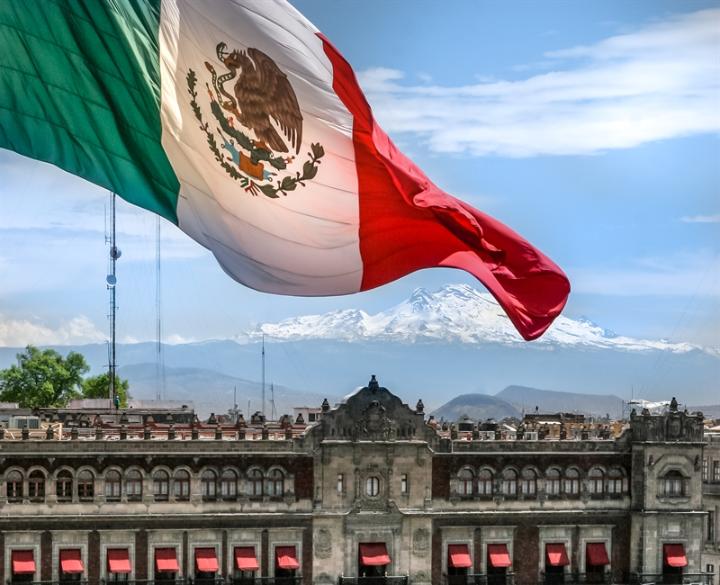The Mexican flag is more than a national symbol; it is a tapestry of history, culture, and identity. Its green, white, and red colors and the iconic eagle perched on a cactus devouring a serpent tell a powerful story of resilience and unity. For heritage enthusiasts, travel bloggers, and history buffs, exploring the layers behind the flag's creation is like stepping into a vibrant chapter of Mexico's past. This Blog will carry you on a historical journey explaining the origins, symbolism, and evolution of the Mexican flag. Come the end, you discover some hidden facts and enjoy an added appreciation for why this is a flag for national pride.
Creation of the Mexican Flag
When Mexico won its independence from Spain after a grueling 11-year war back in 1821. Mexico designed a flag, which is referred to as the "Tri-Color Flag," was very much influenced by the Plan of Iguala—a political agreement that set out the principles of independence, unity, and Catholic faith. Iturbide's Army of the Three Guarantees had a banner featuring these ideas, which eventually inspired the layout of the modern Mexican flag.
The first version of the flag had the appearance of a European military standard with diagonal stripes crowned by religious and national symbols. This eventually evolved to the vertical tri-color pattern we know today, giving importance to the values inherent in Mexico's fight for sovereignty.
Quick Fact:
The flag's origins are tied to the Aztec prophecy of founding their capital city, Tenochtitlan, where an eagle perched on a cactus devouring a serpent appeared—a vision that now graces the flag's central emblem.

The Meaning and Symbolism Behind Each Color
The Mexican flag's colors are not just visually striking but deeply symbolic. Each color represents significant aspects of both historical and cultural identity: Green symbolizes independence and hope. While it was associated with independence from Spain earlier, it is now linked to prosperity and renewal as well. White symbolizes purity and faith. Founded in the strong Catholic legacy of Mexico, it further represents unity of the numerous cultures that make up this country. Red symbolizes the blood of national heroes. It is used to symbolize the loss during the struggle for Mexico's independence. Together, these colors symbolize the past, present, and future of the country, all in the unity of its people's power.
Did You Know?
The meaning of these colors has changed over time. While originally associated with the principles of the Plan of Iguala (Religion, Independence, Unity), these colors today are used to express patriotism and national pride.
Historical Figures and Theories
Although many historical figures contributed to Mexico's independence, Agustín de Iturbide is still relevant to the Mexican flag. As a leader in the Plan of Iguala, Iturbide envisioned what eventually became the flag, as well as its design and application. However, most historians argue over who, really, came up with the tri-color configuration. One theory for it suggests influence from other tri-colored flags that were deeply admired within that era, like the flags of France and Italy. This international influence combined uniquely Mexican elements reflecting Mexican culture. The second not so well-known theory describes José Magdaleno Ocampo, a Mexican cleric, who supposedly had vital input in integrating the eagled emblem. As documented official records are scant, these theories only continue to weave more interesting stories onto the flag.
Evolution of the Mexican Flag
The Mexican flag has experienced several changes since its inception in 1821. The core configuration of three vertical stripes remains the same, but the central image-the eagle, serpent, and cactus-has had significant alterations throughout history.
1821: The initial tri-color design featured crowned eagles and heavily reflected the influence of the monarchy.
1823: After the transitions of the republic, the crown is removed, now showing the eagle with a snake in its beak and talons.
1916: Under the Carranza government, the eagle's profile, which was earlier front-facing was changed to more dynamic, side-view presentation of Aztec vision, which is kept to this date.

Interesting Facts about Mexican Flag:
Here are five lesser-known facts about the Mexican flag that every history enthusiast should know:
Flag Ceremony: On Flag Day, ceremonies across Mexico salute to honor the flag with dramatic displays, including the unfurling of giant flags in prominent cities like Mexico City. Guinness Record: The largest Mexican flag is located in Piedras Negras, Coahuila, standing at an impressive 120 meters tall.
Military Flag Bearers: During national events, members of the military always hold the flag to symbolize its sanctity.
The Sacred Copy: A special version of the Mexican flag, enshrined in the National Palace, is considered too sacred to be flown outdoors. Colors of Inspiration: Mexico's flag inspired many other flags, including those of Italy and Iran, because the vertical tri-color layout was a popular choice during the 19th century.
Fun Fact: Although the eagle eating the serpent from the cactus is one of the most iconic designs, there are also added oak and laurel branches to symbolize strength and victory.
Celebrate the History and Legacy of the Mexican Flag
The Mexican flag is a symbol of the country's tumultuous but inspiring history. From its origin linked to independence and an ancient prophecy to its complex symbolism, it is the epitome of the spirit, sacrifice, and unity of the Mexican people. Its development has continuously evolved through the ages, mirroring the perseverance and resilience of a nation.
Unveiling the Colors of the Mexican Flag